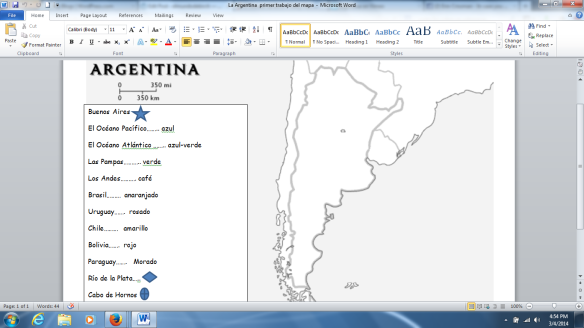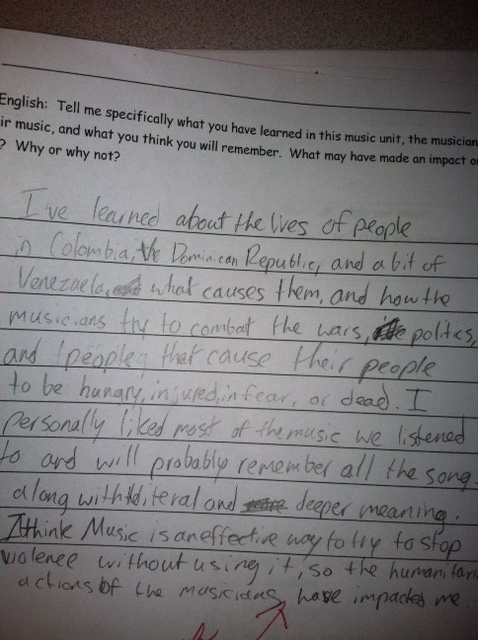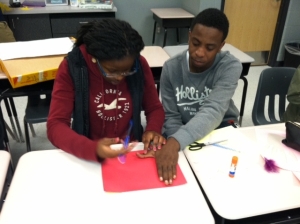Spanish III this year has read Esperanza and studied Guatemala. This was followed by an extensive food unit that I hope to blog about soon. According to the county curriculum, the food unit is followed by a clothing unit with a preterite/imperfect focus which has only been referred to as past tense….never separated. There were three weeks between Thanksgiving and Christmas breaks….perfect to do the clothing unit. This is NOT the basic, introductory unit that most students are exposed to in Spanish I or II. It is greatly expanded, and for the past several years, I have let the students dictate where the bulk of our vocabulary is going to come from, based on their interests and questions. Additionally this year, I decided that I was going to continue with the comprehensible input stories, and so I had to create stories to go with the unit. (I also did this for the extensive food unit). The inspiration for the stories came from the current popularity of Selena Gomez and Enrique Iglesias, a song by Selena Gomez (The Heart Wants What the Heart Wants) that was covered by Kevin, Karla and the Band, and the natural affinity of teenagers for shopping (or not) and the “love interest of the week.” When I wrote the first two stories (for the first two weeks of the unit), it was my intention that the students were going to create the conclusion…but they practically begged me to finish the story (hence story number 3).
While I used many activities and creations from the past few years of this unit, such as the great song ¿Qué me pongo? by Mango Punch Qué me pongo Mango Punch 2014, a fun group creation activity with La Camisa Negra, lots of partner activities, etc. (as can been seen here), the primary focus was the stories, the repetitions, and a myriad of activities that went with the stories.
The story began: Había una chica que se llamaba Sofía. Sofía tenía 16 años y le gustaba ir de compras. Le gustaba ir de compras muchísimo!!! También había un chico, un chico de 16 años que se llamaba Enrique. A Enrique, no le importaba mucho la ropa….pero necesitaba la ropa confortable. I introduced the story for the first week with this powerpoint version Ropa part 1 The student copy for the rest of the week is Ropa part 1 We read it multiple times, using various methods and ended the week with a “practice” free write that was completed with a partner then exchanged with another group who read it, underlined the words used and gave it a score. Practice Free Write
Week Two featured the second part of the story. Ropa part 2 and another version with many images replacing the vocabulary Ropa part 2 with multiple images. We also used these story cards Sofia 2nd part story cards to retell the story (run off, cut and laminated) with a partner. The cards also lend themselves to a multitude of activities: vocabulary identification/description, sequencing, teacher read description with student “grabbing” of the correct card, etc. Part of the fun this week was the designing of the outfits that the students thought that Sofia and Enrique had worn to the dance.
Dibuja las prendas de ropa que llevaban Enrique y Sofía. Cada persona necesita tener 4 prendas de ropa y 2 accesorios. ¡Incluye los colores! 

This was a multiple day activity…the creation of the outfits, the description of the outfits to a partner, and then an inner/outer circle activity where they received and exchanged and described multiple creations that were not theirs. There was also an assessed free write for this part of the story Sofia second part free write
Week Three brought the conclusion of the story. Ropa part 3, Sofía queria ir verb completion activity an acting competition, playing Kahoot with the story and also Triple Trouble Triple Trouble game. Triple Trouble is played with groups of 2/3 students (each with their own color marker). The teacher asks a question, and the first student has 10 seconds to tell/write the answer for his/her partner. If correct, he/she colors in one circle, with the goal of getting three in a row as many times as possible. Naturally, we also had to work with the song What A Heart Wants as covered by Kevin, Karla and the Band.
We ended the week with an Educreations project Educreations 2014 for blog which really showed how much vocabulary they were using as well as a pretty natural use of the past tense.

















